It’s the week of the Super Bowl, the crown jewel of the NFL, and better yet, of professional sports.
In 2001, however, there was a different kind of pro football league ― a violent, tawdry circus known as the Extreme Football League, or XFL. Created by two titans of the television industry, pro wrestling magnate Vince McMahon and NBC’s Dick Ebersol, the eight-team league was everything that the NFL still tries not to be: brash, abrasive and crazy.
Before it was disbanded after a lone season, the XFL set a record high ― and multiple record lows ― in viewership. Players were mostly an odd collection of has-beens and never-weres, earning no more than $5,000 per week.
As ESPN gets set to release the new “30 for 30” documentary, “This Was The XFL,” on Feb. 2, The Huffington Post caught up with Ebersol and his son, director Charlie Ebersol, to discuss the film and why the league still resonates with sports fans despite its failure 15 years ago.
This interview has been edited and condensed for clarity.
Walk me through the process of creating the XFL.
Dick Ebersol: Vince and I had been business partners starting in 1985 for five years, and then I had taken the sports job at NBC, so I couldn’t be in a private sports enterprise simultaneously, but we had maintained a really good personal friendship.
So here he was, announcing a football league, and it seems interesting enough to me. He called me on the phone and I said, “I heard enough to tell you that I have some interest, because I know that we could have good fun with all this, but I need to understand better what your plan is. So don’t talk to anybody about TV.”
Or he definitely hadn’t talked to anybody about TV anyway. And within ― believe it or not ― I think six weeks, we had a deal to be 50-50 joint ventures.
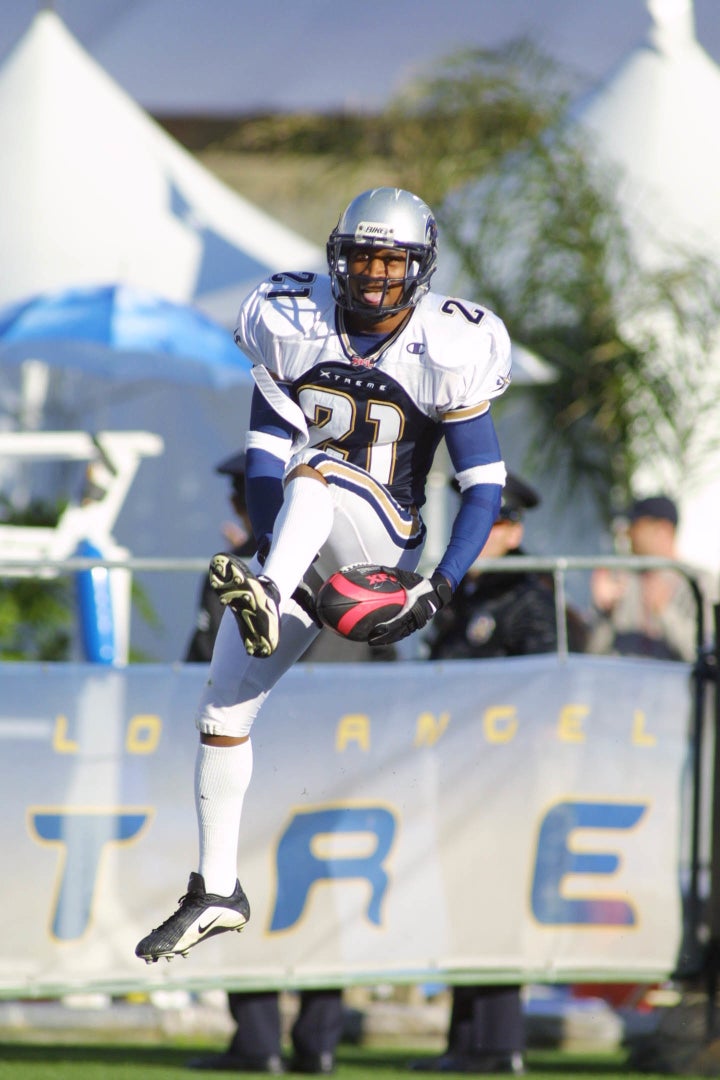
Putting the on-field product aside for a moment, the XFL revolutionized the way sports were sold.
DE: As you’ll see in the show, the greatest thing about the league was the way that it was sold. The anticipation became so enormous that it blew us away. I’ll never forget going into the first game.
I actually thought that there were a lot of people out there who thought our brand of football was going to be so radically different that the linebackers ― in a defensive set ― would be allowed to have chairs to hit the quarterbacks over the head. Because, if you remember, that was the standard wrestling thing, grab a ring-side chair and go back and hit somebody over the head and supposedly knock him out.
I don’t think I’m wrong in telling you this: You’ll laugh your ass off, if nothing else, and it’s great fun with something that ended up being such an oversized flop.
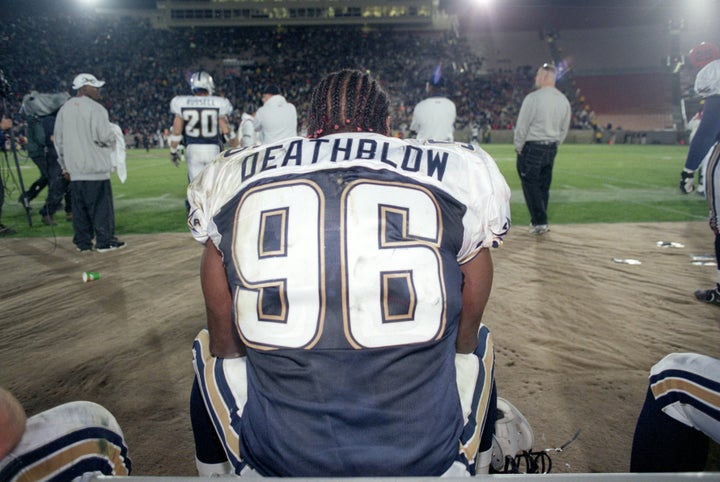
The skycam ― now a staple at marquee sporting events ― was first introduced at scale by the XFL. How did that even come about?
Charlie Ebersol: You know the Orange Bowl, about 15 years earlier, was the first time we’ve ever seen professionals use it during an event. The thing was when they tried to use it, the NFL the NBA said they never allow a camera to fly above the field. So when the XFL came along, the big premise of the league was that this is a league created for television.
Look, it proved it: Every piece of technology that was applied to the XFL is now standard. In 18 months, everyone was using that technology in the NFL, and I think that’s sort of been the definition of my father’s and Vince’s careers, that they were always the first to market this thing, and in doing so, they defined the market. When the XFL failed, it also revolutionized television broadcasting, so I weigh that against the larger picture.
DE: This was never anything to replace football in the fall. We were never going to run football against the NFL. So it was never looked upon as a bad business risk by anybody, it was just an enormous, you could say, fun failure.
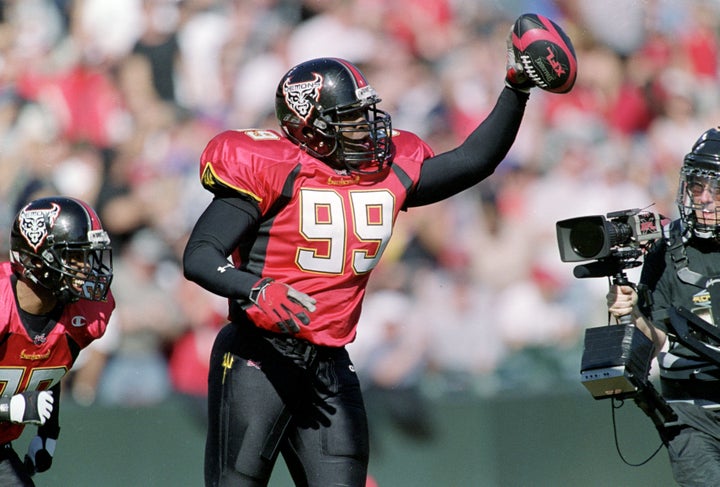
Fun to be sure, but definitely a failure.
DE: Saturday night was then as it is now, the least-watched night of the week for network television. The networks today average not even a 2 rating on Saturday night. We would have been happy then with a 5 rating.
The very first [XFL] game was a 10 rating, which was higher than any Saturday night had been in more than a decade at that point. So it showed the anticipation for an interesting, new type of league. It showed players training for games as if there were Green Berets, and mortars going off on the field and everything. The public got so caught up in it, we probably ― we definitely ― over-hyped it.
The quality of the football also was very poor. That made it very hard to continue selling, right?
DE: I think enough of them would have stayed if the caliber of football was good. I figured that out by the end of the first quarter of the first game, that this was not going to work because of the quality of the football. And then it became how to shepherd this thing through the first season, knowing we would probably never get a second season.

Is it simple enough to assume, then, that the league would have lasted had the actual football been better?
CE: Absolutely. I would take this so far as to say, if they had not decided two weeks before the first game to broadcast the Vegas game and instead stuck with their original plan, which was the Orlando game ― which turned out to be like 37-34 [actually, it was 33-29] and was a barnburner with tons of touchdowns scored and violence.
I think that the only thing that surprised me about the XFL is that it failed. I really felt watching the XFL, and I think most fans felt watching it, “Wow, they’re doing this crazy stuff. Why the hell is the NFL not doing this?”
Yet even still, the league pushed so many envelopes. Was that a positive?
CE: The marketing was their greatest strength and their greatest weakness. They did such a good job marketing, they just didn’t market the thing they were actually going to give people. So when people tuned in and the defensemen didn’t have folding chairs to hit the offensive players with ― I think there was a certain level of disappointment among the fans.
I also would say that six months of the best marketing campaign, maybe, in the history of sports television [couldn’t compensate for only] one month of practice for the players to practice together.
DE: By the halfway point of the season, it was setting all-time lows.
How important was it for the XFL to establish itself as an entirely separate entity from the NFL? I mean, this was still pro football, but not what sports fans were accustomed to.
CE: People forget that the NFL is a juggernaut now, but in 2001, they were really suffering. The league had become restricted in terms of what players were allowed to do and the quarterback was being treated like the Shah of Iran and no one was allowed to touch him. The [XFL] wanted a [different] version of football.
They wanted this thing to have the bones of football, but they wanted to build out the rest of it to do something much more dynamic. They were willing to try new stuff in every single facet of the game.
Like the customized player names?
DE: Well, the names were something in theory that Vince was talking about months before the first game, but when we were about to play the first national television game, it was actually during the course of that day that those names were being created.
So, the beauty of anything you do with Vince is that anything is possible at any time. In fact, we’d never had lawyers between us ― that’s how trusting we’d become of each other and still are today. Nothing that I’ve ever done with Vince has been more fun than humans should be allowed. We just have this relationship.
One of the odder things I remember was the concept of a hot tub in the end zone full of strippers.
CE: The XFL was really unique in the sense that the league owned all the teams. So everybody was an employee of the XFL.
So, in each city, the GM had a lot of leeway because there were so many things going on at the league level, with teams having to figure out how to get people to come to games. So about halfway through the season, a mandate came down from WWE/NBC/XFL headquarters and they said, basically, “Push the marketing envelope, you can be controversial, knock yourself out.”
The LA GM and his marketing person came up with the idea of putting a hot tub in the end zone.
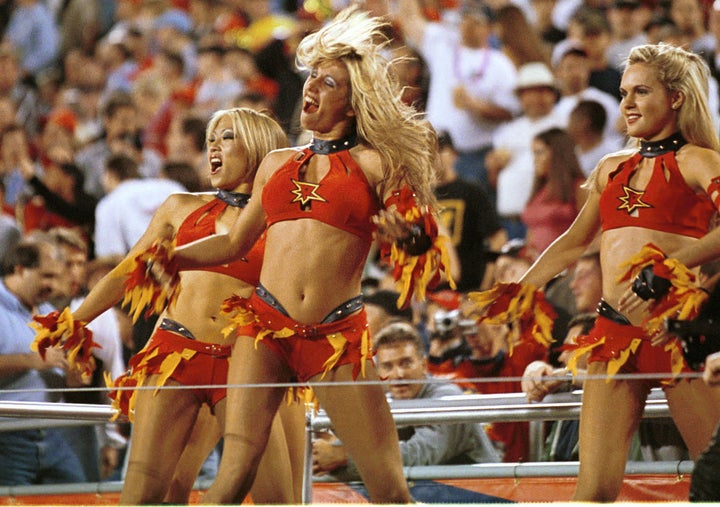
How was the idea received?
CE: It started with cheerleaders, and they went to the head cheerleader and said, “Hey, we’re going to put this out there” and she was like, “No. My cheerleaders are professional dancers, and they’re not going to do that.”
So they were like three days out [from the game] and didn’t know what to do, so they went to ― I swear to God, I think they went to the Spearmint Rhino ― and hired some girls to be in the hot tub. And the players didn’t know until they arrived at the game, and so a bunch of players told me later that they were like warming up and there were girls in an inflatable hot tub in one of the end zones.
So many things, too, that could have gone wrong and did. It always felt like the league was snakebitten.
DE: We just had a succession of things [and bad luck], including the second week with a huge game out in LA. The truck power failed and we lost the signal all the way across the country for like 20 minutes, and it turned out someone had forgotten to put gas in the generator.
CE: In the middle of the league, they changed the rules. So all of a sudden, they had motion behind the line and a bunch of other things like that. Once they got to week four or five and the ratings really slipped to historic lows, they really tried just about everything, but I think they were incredibly unlucky.
The league had already shown the viewers really crappy football, and the viewers weren’t going to come back ― they weren’t going to be fooled for a second time.
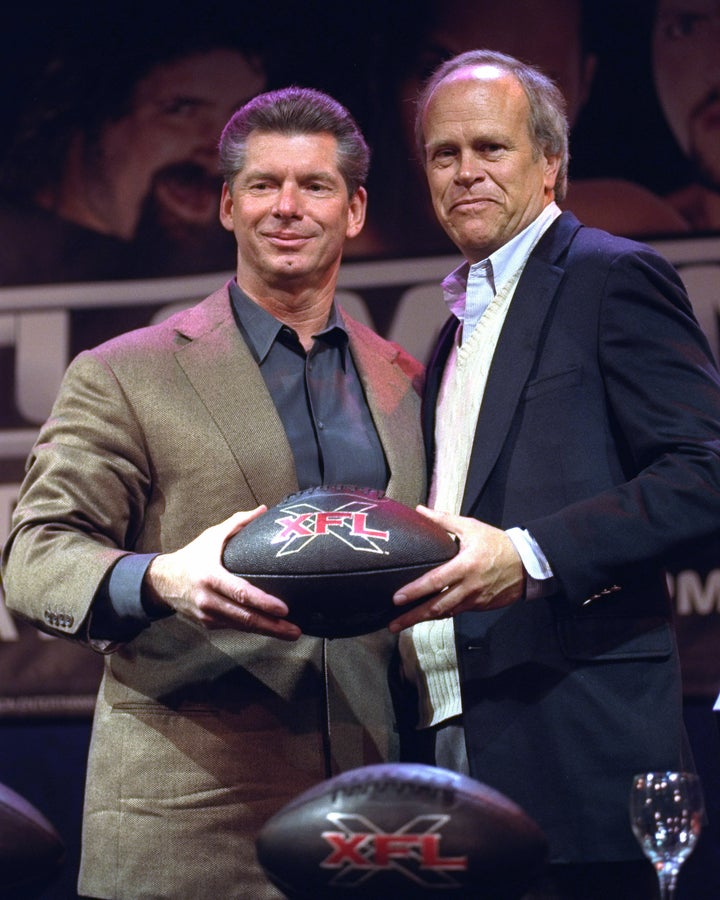
From an individual standpoint, what did you struggle with or what challenged you during the documentary production?
CE: First of all, it was terrifying interviewing my father and Vince. Talking them both into doing the film was a funny shell game, which was Vince saying, “Yeah, I’ll do it if Dick does it,” and my dad saying, “I’ll do it if Vince does it,” and getting one of them to jump off the cliff first.
I think the bigger challenge was trying to deliver an hour-and-a-half film. Our first cut was two and a half hours long and had the same pace as the final film. We wanted the film to convey the chaotic and hair-on-fire pace which really produced the league. That pacing of one thing after another after was an important choice for me, but it meant that we had to cut a lot of stuff out.
As a whole, how rewarding was making this documentary for you?
DE: The best thing about this show, other than having lived that part of my life, is that my son produced and directed it. Of all the things I’ve ever done in my career, there’s nothing I’m as proud of than seeing what he pulled off with this, because this is really first-rate entertainment and I’m overwhelmed that ESPN is as supportive of this as they are ― because I competed against ESPN for a very long time.
“This Was The XFL” airs on ESPN on Feb. 2 at 9 p.m. Eastern.
Email me at jordan.schultz@huffingtonpost.com, ask me questions about anything sports-related on Twitter at @Schultz_Report, and follow me on Instagram at @Schultz_Report.
